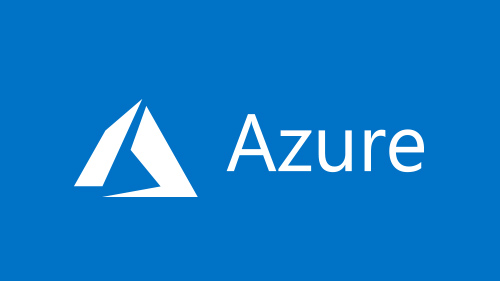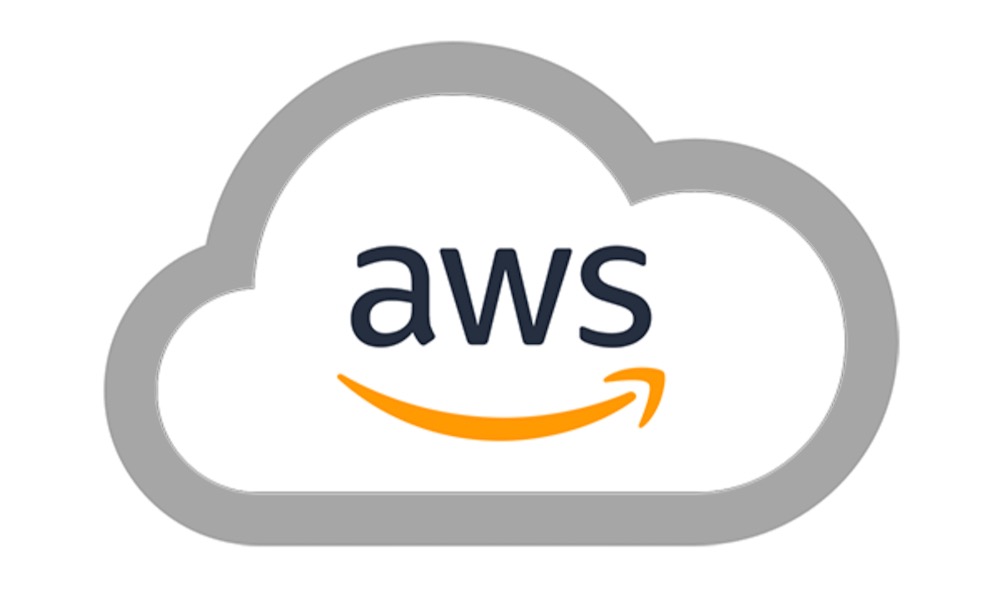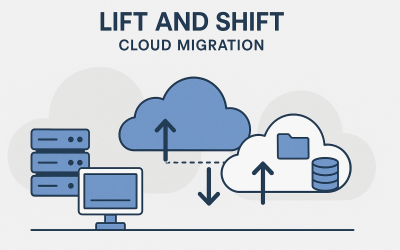Cloud computing is changing how businesses operate by providing a platform to store, manage, and access data online. A key choice for many is comparing Azure security vs AWS security to find the most secure option.
Cloud security is paramount as businesses entrust their sensitive data to cloud platforms. It ensures protection against cyber threats, data breaches, and unauthorized access. Robust cloud security measures are essential to maintain trust, compliance, and the seamless functioning of cloud-based systems.
Azure and AWS (Amazon Web Services) are leading cloud service providers, offering an extensive range of cloud solutions. Azure, by Microsoft, and AWS, by Amazon, provide reliable infrastructure, storage, and computing resources. Their global presence and innovative tools make them go-to choices for businesses seeking scalable and secure cloud solutions.
What Is Cloud Security & Its Objectives?
Cloud security is the practice of safeguarding data, applications, and infrastructure hosted in the cloud from cyber threats. Its primary objectives are to protect sensitive information, ensure data privacy, prevent unauthorized access, and maintain the integrity and availability of cloud resources. By implementing robust security measures, businesses can confidently harness the benefits of cloud computing while mitigating risks associated with cyberattacks and data breaches.
Azure Security – Features, Capabilities, Network Security Groups

Azure Security refers to the protective measures in place when using Microsoft’s cloud platform, Azure. It includes tools, protocols, and best practices to safeguard data, applications, and infrastructure from cyber threats. Azure Security ensures data privacy, compliance with regulations, and guards against unauthorized access.
With Azure Security, your business can confidently leverage the power of the cloud while maintaining the highest level of protection for your digital assets.
Azure Cloud Security Features
Azure cloud security offers robust features to protect your data and resources. It includes identity and access management for secure logins, encryption to safeguard data in transit and at rest, threat detection to identify and respond to potential attacks, and compliance tools to meet regulatory requirements.
Azure’s security features provide peace of mind, ensuring that your business operations remain safe and resilient in the cloud.
Azure Network Security Group
Azure Network Security Groups (NSGs) act as virtual firewalls, controlling inbound and outbound traffic to Azure resources. They help you define rules to allow or deny traffic based on source and destination IP addresses, ports, and protocols. NSGs enhance your Azure security by giving you granular control over network traffic, ensuring only authorized communication occurs, and helping to protect your SAP systems and other resources in the cloud.
Azure Security Center for threat detection and response
Azure Security Center is your shield against cyber threats in the cloud. It constantly monitors your Azure environment, detects suspicious activities, and provides real-time threat alerts. Plus, it offers smart recommendations to strengthen your security posture. With Azure Security Center, you can swiftly respond to potential threats, safeguard your SAP systems and data, and keep your business secure in the digital age.
Azure Security Vs AWS Security – Key Differences
Azure and AWS are two cloud giants, each with its security features. Azure emphasizes seamless integration with Microsoft products, while AWS offers a wide range of services and fine-grained control. Azure provides Azure Security Center for comprehensive threat protection, while AWS offers AWS Inspector and GuardDuty. Both prioritize security, but the choice depends on your specific needs and existing tech stack.
Azure Security:
- Integration with Microsoft products like Windows Server and Active Directory.
- Azure Security Center for comprehensive threat protection and compliance.
- Advanced Threat Protection for Azure SQL Database and Azure Storage.
- Identity and access management with Azure Active Directory.
- Strong focus on hybrid cloud security, making it suitable for businesses with on-premises infrastructure.
- Offers Azure Sentinel for advanced security information and event management (SIEM).
AWS Security:
- A vast array of services, allowing fine-grained control over security configurations.
- AWS Inspector for assessing application vulnerabilities and security issues.
- AWS GuardDuty for intelligent threat detection.
- Identity and access management through AWS Identity and Access Management (IAM).
- Extensive security automation tools like AWS Config and AWS Trusted Advisor.
- Strong support for DevSecOps practices, enabling secure continuous integration and deployment.
- Choosing between Azure and AWS security depends on your specific business needs, existing technology stack, and desired level of control and integration.
Also read: Vertical Vs Horizontal Scaling In Cloud Computing
Best Practices for Secure Cloud Adoption – Azure Security & AWS Security
Securing cloud resources, regardless of the provider, involves some crucial best practices. Always use strong, unique passwords and enable multi-factor authentication. Regularly update software and apply security patches. Limit access to resources by granting permissions only to those who need them. Encrypt sensitive data both in transit and at rest. Implement robust monitoring and logging for threat detection. Lastly, educate your team about security risks and practices to create a culture of vigilance.
20 Azure Security Best Practices You Must Know
By following these best practices, you can enhance the security of your Azure resources and protect your company’s valuable data and operations.
- Multi-Factor Authentication (MFA): Enable MFA for user accounts to add an extra layer of security.
- Network Security Groups (NSGs): Use NSGs to control inbound and outbound traffic to Azure resources based on rules.
- Role-Based Access Control (RBAC): Implement RBAC to grant permissions to users and applications based on their roles.
- Azure Security Center: Activate Azure Security Center for threat detection, vulnerability assessment, and security recommendations.
- Encryption: Use Azure Disk Encryption and Azure Storage Service Encryption to encrypt data at rest.
- Azure Active Directory (Azure AD): Ensure strong password policies, and regularly review Azure AD logs for suspicious activities.
- Data Classification: Classify and label sensitive data, and implement Azure Information Protection to control access.
- Monitoring and Logging: Set up Azure Monitor and Azure Security Center alerts for real-time threat detection and incident response.
- Security Updates: Regularly apply security updates to virtual machines and other Azure services.
- Backups and Disaster Recovery: Implement Azure Backup and Azure Site Recovery for data protection and business continuity.
- Just-In-Time (JIT) Access: Use JIT access to restrict access to virtual machines only when needed.
- Audit and Compliance: Regularly audit and assess your Azure environment for compliance with security standards and regulations.
- Endpoint Protection: Install endpoint protection solutions on virtual machines for antivirus and antimalware protection.
- DDoS Protection: Enable Azure DDoS Protection to defend against distributed denial-of-service attacks.
- Identity Management: Use Azure AD Privileged Identity Management (PIM) to manage, control, and monitor access to Azure resources.
- Azure Firewall: Deploy Azure Firewall to protect your applications and resources from network threats.
- Resource Locks: Use resource locks to prevent accidental deletion or modification of critical resources.
- DevSecOps Practices: Integrate security into your DevOps processes and continuously scan for vulnerabilities.
- Employee Training: Train your staff on Azure security best practices and keep them informed about emerging threats.
- Incident Response Plan: Develop and regularly update an incident response plan to swiftly address security incidents.
15 AWS Security Best Practices You Must Know

By following these best practices, you can strengthen the security of your AWS resources and protect your SAP consulting company’s data and infrastructure effectively.
- Identity and Access Management (IAM):
a. Use IAM to control access to AWS resources.
b. Apply the principle of least privilege to grant permissions.
c. Enable Multi-Factor Authentication (MFA) for IAM users.
- Secure Credentials:
a. Safely manage and rotate access keys, secrets, and passwords.
b. Avoid hardcoding credentials in code or storing them in plaintext.
- Network Security:
a. Use Virtual Private Cloud (VPC) to isolate resources.
b. Implement security groups and Network Access Control Lists (NACLs) for network control.
c. Utilize AWS PrivateLink for private network connections.
- Data Encryption:
a. Enable encryption at rest using AWS Key Management Service (KMS).
b. Encrypt data in transit with SSL/TLS.
c. Use AWS Certificate Manager for SSL/TLS certificates.
- Logging and Monitoring:
a. Set up AWS CloudTrail for auditing and AWS CloudWatch for monitoring.
b. Create custom alarms for suspicious activity.
c. Implement AWS Config for resource inventory and configuration history.
- Security Groups and Network ACLs:
a. Restrict inbound and outbound traffic with security groups.
b. Use Network ACLs to control traffic at the subnet level.
- Patch Management:
a. Regularly update and patch EC2 instances and other AWS services.
- Security Assessments:
a. Perform regular vulnerability assessments and penetration testing.
b. Use AWS Inspector for automated security assessments.
- Data Classification:
a. Classify and label sensitive data.
b. Use AWS Identity and Access Management (IAM) policies to enforce data access controls.
- Incident Response Plan:
a. Develop an incident response plan and run tabletop exercises.
b. Use AWS Organizations to centralize security management.
- Backup and Recovery:
a. Implement automated backup solutions like AWS Backup.
b. Test backup and recovery procedures regularly.
- DDoS Mitigation:
a. Use AWS Shield to protect against Distributed Denial of Service (DDoS) attacks.
b. Configure Web Application Firewall (WAF) for application-level protection.
- Serverless Security:
a. Secure serverless functions (e.g., AWS Lambda) with appropriate permissions.
b. Monitor serverless applications for vulnerabilities.
- Employee Training:
a. Educate employees on AWS security best practice.
b. Conduct security awareness training.
- Compliance and Governance:
a. Ensure compliance with relevant regulations and industry standards.
b. Use AWS Control Tower and AWS Organizations for governance.
- Third-Party Security Tools:
a. Consider using third-party security solutions for enhanced protection.
FAQs about Azure Security Vs AWS Security Comparison
Is Azure more secure than AWS?
Both Azure and AWS are highly secure cloud platforms, but the level of security depends on how you configure and manage them. Azure and AWS offer similar security features, and the choice often depends on your specific needs and familiarity with each platform. Both providers prioritize security, so it’s essential to implement best practices and follow security guidelines to keep your data and systems safe, regardless of your choice.
What is Azure equivalent to AWS security groups?
Azure’s equivalent to AWS security groups is called “Network Security Groups” (NSGs). Like AWS security groups, NSGs are used to control inbound and outbound traffic to Azure resources. They allow you to define rules that specify which traffic is allowed or denied based on source and destination IP addresses, ports, and protocols. NSGs provide a firewall-like protection for your Azure virtual machines and other resources, helping to secure your SAP consulting company’s infrastructure.
Why do people prefer AWS over Azure?
People often prefer AWS over Azure for its extensive service offerings, mature ecosystem, and vast global presence. AWS boasts a wider selection of specialized services and has been in the market longer, earning trust. Its flexibility and scalability attract businesses of all sizes. However, the choice depends on specific needs, and both AWS and Azure are reliable cloud providers.
What are the biggest differences between Azure and AWS?
Azure and AWS are both major cloud providers, but they have some key differences. Azure integrates well with Microsoft products and is favored by businesses using Windows. AWS offers a wider variety of services and more data centers globally. Azure is known for its hybrid cloud solutions, while AWS emphasizes flexibility and customization. The choice depends on your specific needs and existing tech stack.
How expensive is Azure compared to AWS?
Azure and AWS pricing can vary depending on your usage and specific services. Generally, they offer similar pricing models. Azure may be cost-effective if you’re already using Microsoft products, while AWS offers flexibility in pricing. To determine cost, consider factors like your workload, location, and resource requirements. Both providers have calculators to help estimate expenses, so it’s best to evaluate your unique needs.




0 Comments